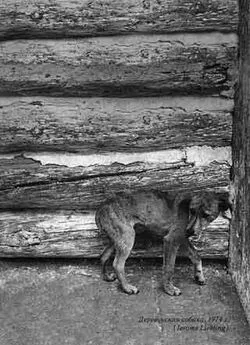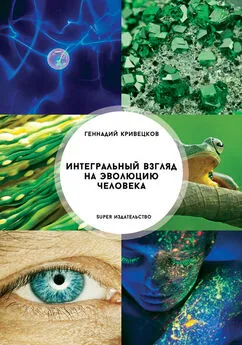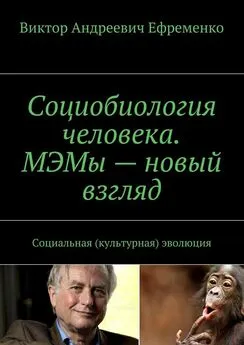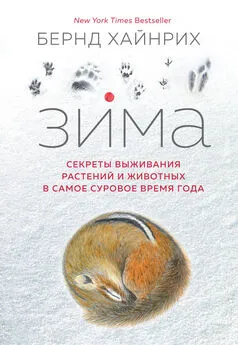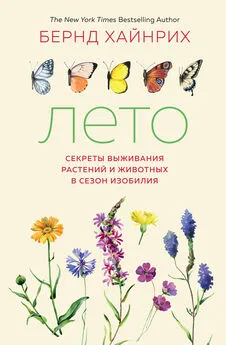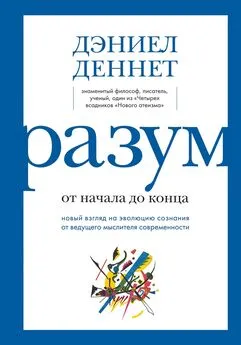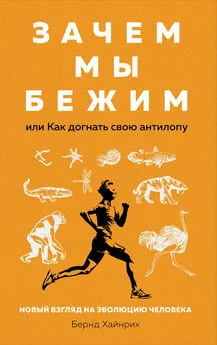Берндт Хайнрих - Зачем мы бежим, или Как догнать свою антилопу [Новый взгляд на эволюцию человека] [litres]
- Название:Зачем мы бежим, или Как догнать свою антилопу [Новый взгляд на эволюцию человека] [litres]
- Автор:
- Жанр:
- Издательство:Литагент Аттикус
- Год:2020
- Город:Москва
- ISBN:978-5-389-18474-9
- Рейтинг:
- Избранное:Добавить в избранное
-
Отзывы:
-
Ваша оценка:
Берндт Хайнрих - Зачем мы бежим, или Как догнать свою антилопу [Новый взгляд на эволюцию человека] [litres] краткое содержание
«Я утверждаю, что наши способность и страсть к бегу – это наше древнее наследие, сохранившиеся навыки выносливых хищников. Хотя в современном представителе нашего вида они могут быть замаскированы, наш организм все еще готов бегать и/или преследовать воображаемых антилоп. Мы не всегда видим их в действительности, но наше воображение побуждает нас заглядывать далеко за пределы горизонта. Книга служит напоминанием о том, что ключ к пониманию наших эволюционных адаптаций – тех, что делают нас уникальными, – лежит в наблюдении за другими животными и уроках, которые мы из этого извлекаем». (Бернд Хайнрих)
Зачем мы бежим, или Как догнать свою антилопу [Новый взгляд на эволюцию человека] [litres] - читать онлайн бесплатно ознакомительный отрывок
Интервал:
Закладка:
Успех – разный для разных людей, как мне напомнили во время недавней поездки по стране. Наша семья остановилась в парке Ред-Рок недалеко от Гэллапа, Нью-Мексико. Пока мы устраивали пикник, мимо нас по каньону пробежал один индеец. Когда он возвращался, я остановил его поболтать. Выяснилось, что мы оба – бегуны на дальние дистанции. Недавно он пробежал шесть марафонов, притом что весил более 110 кг, много курил, имел высокое давление и проблемы с алкоголем. Бег спасал ему жизнь. «Каждый раз, когда я пересекаю финишную черту, – говорил он мне, – я побеждаю». Он многое выиграл. Его мозг сделал это. Он думал, что сможет это сделать, и сделал это, хотя мог быть чертовски неправ. Я также чувствую, что во многом обязан бегу – своим образованием, здоровьем и, возможно, жизнью.
В Чикаго я сделал все, что тогда умел. Вот что для меня было важно. Как я уже сказал, когда я финишировал, то даже не знал, какой рекорд поставил, и поставил ли вообще. Я сознательно принял участие в забеге только 19 лет спустя, когда увидел своего сына на соревнованиях по кросс-кантри в средней школе. У меня пробежали мурашки. Наплывали воспоминания, и все выглядело так, как будто случилось вчера. Поэтому я начал писать, чтобы не потерять опыт, который был для меня столь дорог и ценен. Я хотел передать его дальше, а также заново получить опыт бега, и начал тренировки, чтобы попробовать добиться рекордов в своей возрастной группе (старше 60).
Когда бушмены убивают канну, гну или другую антилопу, они делят мясо со своими друзьями. Они собираются вокруг раскаленных углей костра и говорят об охоте до глубокой ночи. Когда они не охотятся, они говорят об охоте, переживают свой опыт.
Я считаю, что наше общее охотничье чувство – это способность приумножать ценность, далеко выходящую за рамки практичности. Это мечты. Вот что во многом делает нас людьми. Если бы в теплую африканскую ночь всех современных бегунов собрали вокруг костра, они, как и все бушмены, ворошили бы угли и вспоминали весь путь до финиша и дальше. Это то, что я попытался сделать в этой книге.
Библиография
Urquhart F. A . Monarch Butterfly: International Traveler. Chicago: Nelson-Hall, 1987.
Martin D. E., Gynn R. W. H. The Marathon Footrace. Springfield, Ill.: Charles C. Thomas, 1979.
Costill D. L. A Scientific Approach to Distance Running // Track & Field News. 1979.
Bartholomew G. A., Heinrich B. Endothermy in African dung beetles during flight, ball making, and ball rolling // Journal of Experimental Biology. 1978. 73. P. 65–83.
Heinrich B., Bartholomew G. A. Roles of endothermy and size in inter- and intraspecific competition for elephant dung in an African dung beetle, Scarabaeus laevistriatus // Physiological Zoology. 1979. 52. P. 484–496.
Morgan K. R. Body temperature regulation and terrestrial activity in the ecothermic beetle Cicindela tranquebarica // Physiological Zoology. 1985. 58. P. 29–37.
Hadley M. E. Endocrinology. Upper Saddle River, N.J.: Prentice Hall, 1996.
Hylan D. A. Physiology of Sport. N. Y.: Paragon, 1990.
Nijhout H. F. Insect Hormones. Princeton: Princeton University Press, 1994.
Speck F. G. Penobscot Man: The Life History of a Forest Tribe in Maine. L.: Oxford University Press, 1940.
Tauber M. J., C. A. Tauber C. A., Masaki S. Seasonal Adaptation of Insects. N. Y.: Oxford University Press, 1986.
Cook J. R., Heinrich B. Glucose vs. acetate metabolism in Euglena. // The Journal of Protozoology. 1965. 12. P. 581–584.
Cook J. R., Heinrich B. Unbalanced respiratory growth of Euglena // Journal of General Microbiology. 1968. 53. P. 237–251.
Costill D. L. Metabolic responses during distance running // The Journal of Applied Physiology. 1970. 28. P. 251–253.
Heinrich B., Cook J. R. Studies on the respiratory physiology of Euglena gracilis cultured on acetate or glucose // The Journal of Protozoology. 1967. 14. P. 548–553.
Noakes T. The Lore of Running. Cape Town: Oxford University Press, 1985.
Schmidt-Nielson K. Animal Physiology: Adaptation and Environment. Cambridge: Cambridge University Press, 1990.
Wilmore J. H. Training for Sport and Activity: The Physiological Basis of the Conditioning Process. Boston: Allyn and Bacon, 1982.
Bramble D. M., Carrier D. R. Running and breathing in mammals // Science. 1983. 219. P. 251–256.
Fixx J. F. The Complete Book of Running. N. Y.: Random House, 1977.
Heinrich B. Nervous control of the heart during thoracic temperature regulation in a sphinx moth // Science. 1970. 169. P. 606, 607.
Heinrich B. Thoracic temperature stabilization in a free-flying moth // Science. 1970. 168. P. 580–583.
Heinrich B. Temperature regulation of the sphinx moth, Manduca sexta // Journal of Experimental Biology. 1971. 54. P. 141–166.
Heinrich B. Heat exchange in relation to blood flow between thorax and abdomen in bumblebee. Journal of Experimental Biology. 1976. 64. P. 561–585.
Heinrich B. Keeping a cool head in honeybee thermoregulation// Science. 1979. 205. P. 1269–1271.
Able K. P., ed . Gatherings of Angels. Ithaca: Comstock Books, 1999.
Baird J. Returning to the tropics: The epic autumn flight of the blackpoll warbler // Gatherings of Angels. K. P. Able, ed. Ithaca: Comstock Books, 1999.
Berthold P. Control of Bird Migration. L.: Chapman and Hall, 1996.
Ens B. J., Piersma T., Wolff W. J., Zwarts L., eds . Homeward bound: Problems waders face when migrating from the Bane d’Arguin, Mauritania, to their northern breeding grounds in spring // Ardea. 1990. 78. P. 1–363.
Gonzalez N. C., Fedde R. M. Oxygen Transport from Atmosphere to Tissues. N. Y.: Plenum, 1988.
Harrington B. A. The hemispheric globetrotting of the white-rumped sandpiper // Gatherings of Angels. K. P. Able, ed. Ithaca: Comstock Books, 1999.
Piersma T., Davidson N. The Migration of Knots. Wader Study Group Bulletin 64. Petersborough, U.K.: Monkstone House, 1992.
Piersma T., Koolhaas A., Dekinga A. Interactions between stomach structure and diet choice in shorebirds // The Auk. 1993. 110. P. 552–564.
Schmidt-Nielsen K. How Animals Work. L.: Cambridge University Press, 1992.
Tucker V. A. Respiratory exchange and evaporative water loss in the flying budgerigar // Journal of Experimental Biology. 1968. 48. P. 67–87.
Burney D. A. Recent animal extinctions: Recipes for disaster // American Science. 1993. 81. P. 530–541.
Byers J. A. Play in ungulates. In Play in Animals and Humans, ed. P. K. Smith. Oxford: Basil Blackwell, 1984.
Byers J. A. American Pronghorn: Social Adaptations and the Ghosts of Predators Past. Chicago and London: University of Chicago Press, 1997.
Eyestone E. Man vs. Horse // Runner’s World. 2000. November.
Kurtén B., Anderson E. Pleistocene Mammals of North America. N. Y.: Columbia University Press, 1980.
Lindstedt S. L., Hokanson J. F., Wells D. J., Swain S. D., Hoppeler H., Navarro V. Running energetics in the pronghorn antelope // Nature. 1991. 353. P. 748, 749.
Mech L. D. The Wolf: The Ecology and Behavior of an Endangered Species. N. Y.: Doubleday, 1970.
Nobokov P. Indian Running: Native American History and Tradition. Santa Fe, N. M.: Aneburt City Press, 1981.
Price E. O. Behavioral aspects of animal domestication. Quarterly Review of Biology. 1984. 59. P. 1–32.
Stuart A. J. Mammalian extinctions in the late Pleistocene of northern Eurasia and North America // Biology Reviews. 1991. 66. P. 453–462.
Turbak G. Pronghorn: Portrait of the American Antelope. Flagstaff, Ariz.: Northland Publishing Co., 1995.
Webb S. D. A history of savanna vertebrates in the New World. Part I. North America // Annual Review of Ecology, Evolution, and Systematics. 1977. 8. P. 355–380.
Dagg A. I. The locomotion of the camel ( Camelus dromedarius ) // Journal of Zoology. 1974. 174. P. 67, 68.
Denis F. Observations sur le compartement du dromadaire. Thesis. Faculté des Sciences de l’Université de Nancy, 1970.
Gauthier-Pilters H., Dagg A. I. The Camel: Its Evolution, Ecology, Behavior, and Relationship to Man. Chicago: University of Chicago Press, 1981.
Louw G. Physiological Animal Ecology. Essex, U.K.: Longman Scientific and Technical, 1993.
McKnight T. L. The Camel in Australia. Carlton: Melbourne University Press, 1969.
Perk R. F. The camel’s erythrocyte // Nature. 1963. 200. P. 272, 273.
Perk R. F. Osmotic hemolysis of the camel’s erythrocytes // Journal of Experimental Zoology. 1966. 163. P. 241–246.
Schmidt-Nielsen K. The physiology of the camel // Scientific American. 1959. 201. P. 140–151.
Schmidt-Nielsen K. Desert Animals: Physiological Problems of Heat and Water. Oxford: Clarendon Press, 1964.
Schmidt-Nielsen K., Crawford E. C., Newsholme A. E., Rawson K. S., Hammel H. T. Metabolic rate of camels: Effect of body temperature and dehydration // American Journal of Physiology. 1967. 212. P. 341–346.
Читать дальшеИнтервал:
Закладка:
![Обложка книги Берндт Хайнрих - Зачем мы бежим, или Как догнать свою антилопу [Новый взгляд на эволюцию человека] [litres]](/books/1057566/berndt-hajnrih-zachem-my-bezhim-ili-kak-dognat-svo.webp)
